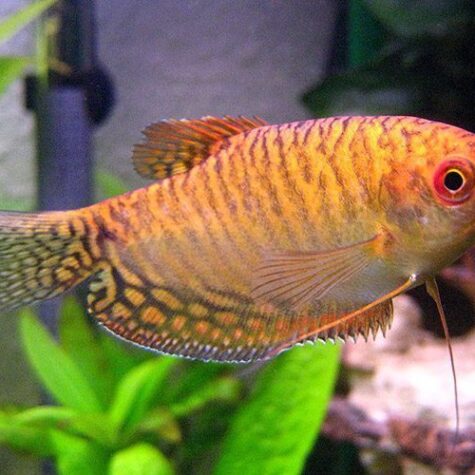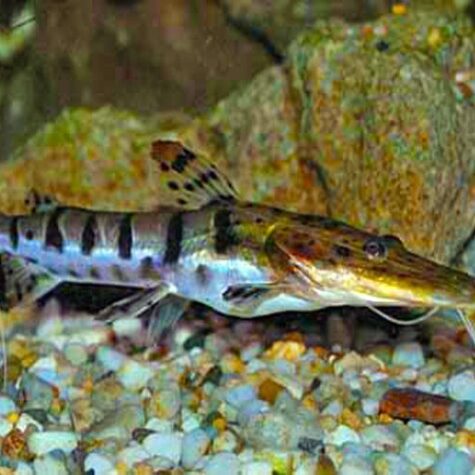$44.00 Original price was: $44.00.$36.72Current price is: $36.72.
*NOTE: AS A FISH FARM, WE DO NOT OFFER GENDER SPECIFIC SEXING ON FISH STOCK. REQUEST FOR MALES OR FEMALES CAN ONLY BE ACCOMMODATED IF THE ITEM SPECIFIES GENDER IN THE DESCRIPTION SUCH AS: MALE BETTA, FEMALE GUPPY, ETC SORRY FOR ANY INCONVENIENCE.
Mudskipper, Silver-lined Nigerian
Synonyms: Euchoristopus kalolo regius, Periophthalmus dipus, Periophthalmus sobrinus,Periophthalmus vulgaris
Maximum recorded size: 4″ when grown outdoors
Sexual dimorphism: None known.
For use in Paludariums, Terrariums, Wet Exhibits, Frog Habitat, Ornamental Pond/Stream
Not only are Mudskippers able to breathe air through their skin, and the lining of their mouth and throat; they are also capable of “walking” on land using their modified pectoral and pelvic fins. Because they can only breathe air through their skin when it is wet, their habitat is limited to very humid climates where they can easily keep themselves moistened when out of water. They posses enlarged gill chambers that allow them to retain a bubble of air. When they are out of the water, the chamber is tightly closed off by a valve in the gill slit which allows their stiff gills to remain moist. Because their gill filaments are so stiff, and do not coalesce when out of water, the Mudskipper has the ability to function on land for extended periods of time. This style of breathing, known as cutaneous air breathing, is similar to the mode used by amphibians.
Body coloration: Brownish to dark grey on dorsum and sides, ventrally whitish; head ventrally white; many small white speckles on cheeks, opercula and sides of body; silvery vertical stripes on flanks, ventrally more evident; 3-8 dorsal dark brown saddle-like irregular bars, may also be visible. Pelvic fins are completely separated and no pelvic frenum is present.
Native to: The Silver-lined Mudskipper is the most widespread mudskipper species, presently known from East Africa eastward to the entire Indo-Pacific region, to the Samoa and Tonga Islands, southern Japan and eastern Australia. This species is particularly popular in southern Japan. It is usually found nearby water at low tide, frequently nearby the mangrove marine fringe, but it apparently is an extremely adaptable species, and different populations are found in different environmental conditions. Males jump to attract females into burrows. Burrows typically have two main turreted openings. It feeds on small invertebrates.




